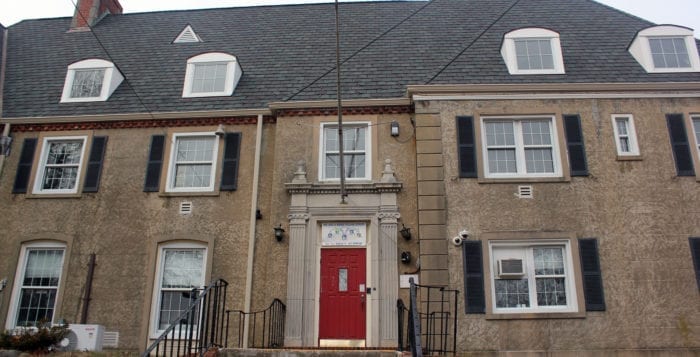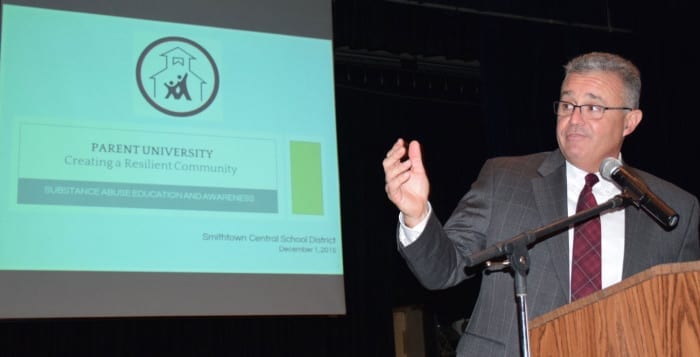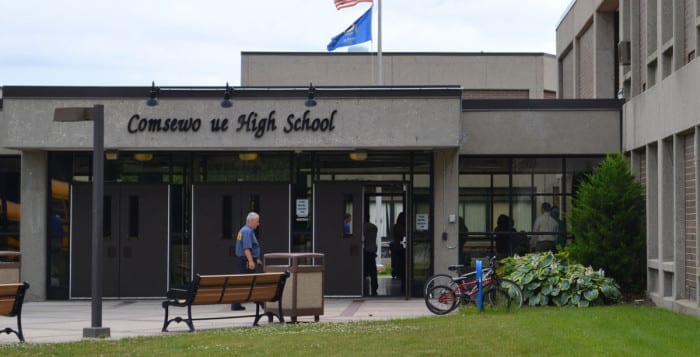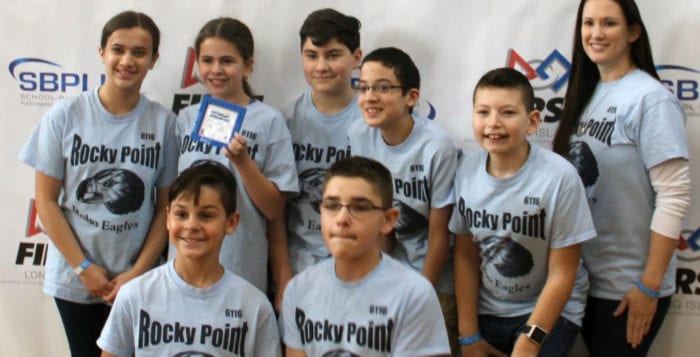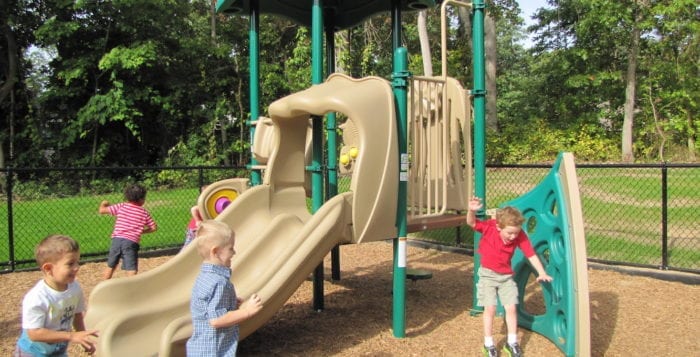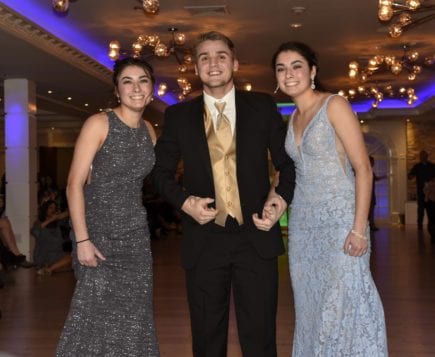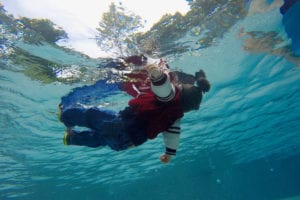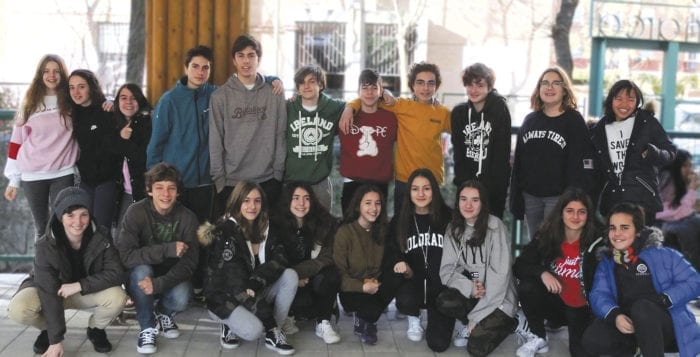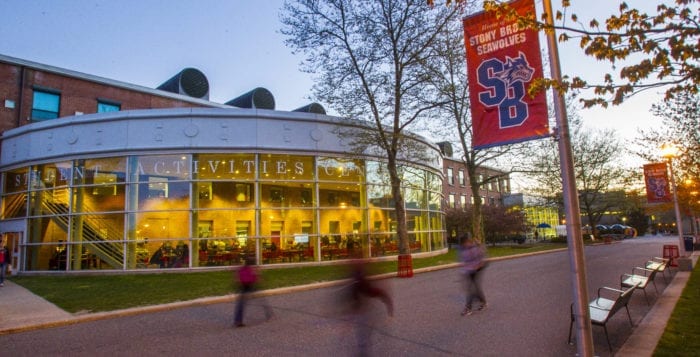By Kevin Redding
During a second public forum held by Shoreham-Wading River’s board of education Tuesday night, a grieving mother pleaded with administrators to “be brave, step out of the box and take a chance” by turning the beloved-but-shuttered school on Tower Hill Road in Shoreham building into a refuge for students that need one.
“We can do something really big here,” said Grace Shea McCarthy, the mother of Remy Kallie Jeanne McCarthy, who, as a 15-year-old freshman at the high school, took her own life Nov. 2, 2016. “My daughter was a very capable, talented, skilled person who, over time, had lost connection with her school and her peers. We need to do more to help these kids sooner.”
McCarthy, an employee at Brookhaven National Lab, asked the board to support a joint proposal by North Shore Youth Council and Tesla Science Center for student-oriented programs and services in the portable units at Briarcliff Elementary School, which was built in 1907 and closed permanently in 2014 as part of the district’s restructuring plan.
She explained that North Shore Youth Council — a Rocky Point-based nonprofit active in communities and school districts throughout the area, including Shoreham-Wading River, Mount Sinai and Miller Place — would be able to host cost-efficient after-school tutoring, recreation, social skill development and summer programs in the space; and provide students of varying ages with professional counseling in the areas of substance abuse, social isolation and depression.
“As a parent watching my child go through this district, I can absolutely tell you this school needs more of these programs,” she said. “We are going through a suicide epidemic — our students need opportunities to build their confidence through buddy systems.”
McCarthy said partnering these students with science and technology programs at the Tesla Science Center would be “incredibly beneficial,” and serve to reignite the passion for science among youth in the community. She addressed the annual costs of $95,000, plus any additional unexpected costs, to operate the school. Board members and residents expressed concerns over the pricey upkeep during the first public discussion about the property last month. Some proposed that the property be sold off to eliminate the costs.
“When I look at that amount of money to maintain such a spectacular building, such a historical landmark in our backyard, I believe we need to fight to keep it,” she said. “It’s not something we should just give away. To have that knocked down to have condos put up or something, that would be a crime.”
Residents spoke up in favor of the proposal.
David Madigan, a Tesla Science Center board member and a former Briarcliff student, urged the board last month to file covenants on the property so the building could never be taken down.
“This way, you can maintain the ownership of the building for future use and defray the costs,” Madigan said.
While Dennis Ryan, a Shoreham resident, said leasing the building was a good idea if the right group came along, he asked the district to not sell, but demolish the school, getting rid of all the extra upkeep costs and turn the 10-acre property into a park for the community.
“We talk about the budget and trying to get a nest egg — the value is in the land itself,” Ryan said. “Hold onto the property. We don’t need the money at this point. If something happens 10 to 15 years down the line and we need that money, then we know we’ll have it.”
At the top of the forum, Superintendent Gerard Poole presented the district’s evaluation and consideration of some of the ideas residents had during the first forum Jan. 9. These included selling the property, moving the two-floor North Shore Public Library that is attached to the high school to Briarcliff,
attaining historical landmark status and redeveloping the building as a residence for seniors.
Board president Robert Rose assured that the district will not be rushing into any
decision, continuing to weigh the options while promising to hold more public forums.
“We want to take our time and make the right decision,” Rose said.

